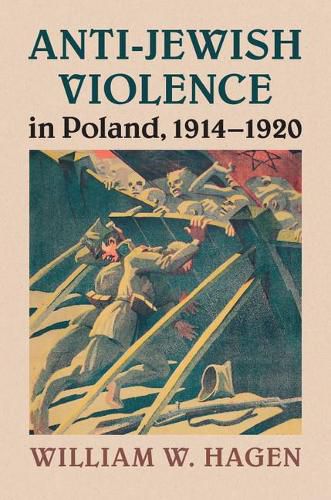Readings Newsletter
Become a Readings Member to make your shopping experience even easier.
Sign in or sign up for free!
You’re not far away from qualifying for FREE standard shipping within Australia
You’ve qualified for FREE standard shipping within Australia
The cart is loading…






Widespread anti-Jewish pogroms accompanied the rebirth of Polish statehood out of World War I and Polish-Soviet War. William W. Hagen offers the pogroms’ first scholarly account, revealing how they served as brutal stagings by ordinary people of scenarios dramatizing popular anti-Jewish fears and resentments. While scholarship on modern anti-Semitism has stressed its ideological inspiration (‘print anti-Semitism’), this study shows that anti-Jewish violence by perpetrators among civilians and soldiers expressed magic-infused anxieties and longings for redemption from present threats and suffering (‘folk anti-Semitism’). Illustrated with contemporary photographs and constructed from extensive, newly discovered archival sources from three continents, this is an innovative work in east European history. Using extensive first-person testimonies, it reveals gaps - but also correspondences - between popular attitudes and those of the political elite. The pogroms raged against the conscious will of new Poland’s governors whilst Christians high and low sometimes sought, even successfully, to block them.
$9.00 standard shipping within Australia
FREE standard shipping within Australia for orders over $100.00
Express & International shipping calculated at checkout
Widespread anti-Jewish pogroms accompanied the rebirth of Polish statehood out of World War I and Polish-Soviet War. William W. Hagen offers the pogroms’ first scholarly account, revealing how they served as brutal stagings by ordinary people of scenarios dramatizing popular anti-Jewish fears and resentments. While scholarship on modern anti-Semitism has stressed its ideological inspiration (‘print anti-Semitism’), this study shows that anti-Jewish violence by perpetrators among civilians and soldiers expressed magic-infused anxieties and longings for redemption from present threats and suffering (‘folk anti-Semitism’). Illustrated with contemporary photographs and constructed from extensive, newly discovered archival sources from three continents, this is an innovative work in east European history. Using extensive first-person testimonies, it reveals gaps - but also correspondences - between popular attitudes and those of the political elite. The pogroms raged against the conscious will of new Poland’s governors whilst Christians high and low sometimes sought, even successfully, to block them.